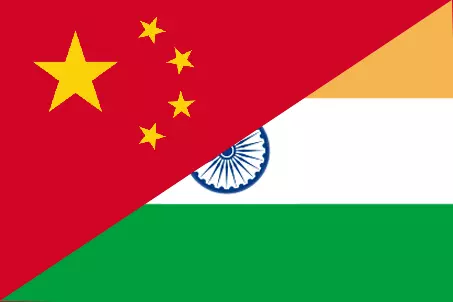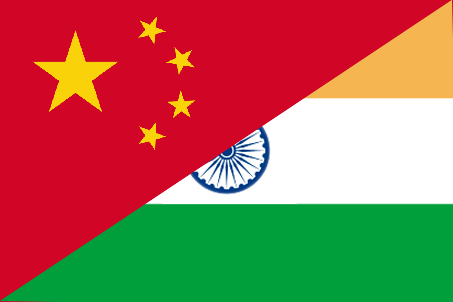
Over 60 years after the 1962 setback caused by the then Prime Minister’s complete misreading of the intentions of the Communist Party of China (CPC) and its brutal dictator Mao Zedong, decision-makers in India do not seem to have learnt any lessons. Just as Pandit Jawaharlal Nehru got lulled by Mao’s deceptive smile, resulting in the catastrophic “Hindi Chini Bhai Bhai”, is twenty-first century Bharat on the way to regarding the same Dragon empire as a land of gold and honey, and the same CPC as a friend, philosopher and guide?
The seeds were sown by diplomat K.M. Pannikar, India’s first ambassador to the People’s Republic of China (PRC), who prompted New Delhi to look at Mao’s land through rose-tinted glasses. That worldview hasn’t entirely left the Indian foreign office, despite the 1962 war, numerous clashes along the Line of Actual Control and multiple 2020 incursions in Ladakh and other Chinese shenanigans inside India.
Why else would a senior former Indian diplomat suddenly emerge to suggest that “India-China ties have turned a corner”, signalling “signs of a thaw”? Even the best of Indian diplomats with direct and first-hand experience of China haven’t said anything like that so far and there’s all-round scepticism about China’s “olive branch” to New Delhi, “allowing” the Indian Army to patrol its own territory in Ladakh after a gap of four and a half years’ diplomatic humiliation.
One must, therefore, revisit the basics of the Chinese psyche, crafty utterances and deceptive acts on the ground. Indians shouldn’t have any doubt in their mind that there’s always a hiatus between Han theory and practice, particularly regarding Beijing’s aggression vis-à-vis dealings with foreigners, especially those from India. Until and unless our countrymen make an honest attempt to fathom the gravity of dealing with the Dragon, India’s woes are unlikely to cease in the foreseeable future. China is no child’s play. Allowing Beijing to get the upper hand adversely affects India’s diplomacy and defence, banks to the border, trade to territory. Making matters worse, there are internal actors who are in cahoots with hostile Hans, and open borders in the neighbourhood help China’s mega infiltration of trained spies out to sabotage India’s territorial integrity.
India shouldn’t shy away from learning some hard lessons from the acts of omission and commission of two senior American officials (late Henry Kissinger, secretary of state and national security adviser to President Richard Nixon, and Henry M. Paulson, Jr, former head of Goldman Sachs and US treasury secretary 2006-2009). Both were titans of their era, and each had visited China over 100 times. Both had shaped and tilted US policy decisively and positively towards China without realising what irreparable long-term harm they were inflicting on their own country.
America’s pro-CPC China policy no doubt financially favoured its citizens and consumers in the short term, with access to cheap Chinese goods, from apparels to dinky toys, fancy make-up material to transistor radios, ballpens to daily groceries. But as American economics follows the dictum of “consumer is king”, the end result was unwitting devastation of America’s vast industrial base. No wonder the US moans in agony today as it tries to make course-correction and “re-fix” its economy. No wonder Donald Trump’s clarion call to “Make America Great Again” resonated with a majority of American voters who sent him back to the White House starting January 2025.
The naked aggression displayed by China’s current overlord Xi Jinping has utterly exposed the “bide your time, hide your intentions” formula of the late Deng Xiaoping.
Look at the similarities. Just as India’s ruling class failed to tackle China effectively for 75 years, the US establishment emulated the same folly with great elan for over three decades under the mantra of “globalisation” and “liberalisation”, little realising that the potential Chinese threat posed an existential danger to its economic supremacy. Just see what former treasury secretary Henry M. Paulson said: “It’s such a typically Chinese phenomenon. An issue will lie dormant, or be put on simmer, for weeks, months, even years, as the Chinese study, debate, test, and build a consensus around it and behind the scenes. Then, suddenly, they will embrace it wholeheartedly and drive home their message with clarity and urgency”.
Does the example of India’s June 2020 Galwan fiasco come to mind? Isn’t there a resemblance with other issues too, where China’s brazenly and brutally trampled upon India’s unity, integrity, safety, security and sovereignty on multiple occasions and in several sectors? China believes in a war of attrition in every sphere of statecraft, putting every rival, enemy or competitor to test — to wear them down, exhaust them and to ultimately push the opposite side into such an impossible corner through meaningless and endless dialogue, negotiations, wasting their time, money, energy and patience. They have many ploys, with their diplomats and negotiators often claiming they understand no language other than Mandarin. This is how nations like the US and India are taken for a ride. No wonder both India and the US are sailing in virtually the same boat in choppy waters.
Today, the US, however, appears serious on “China pushback mode”. But India is still at sea because Indian traders and businessmen have already inflicted irreversible damage to their own country. One example will suffice. From 1999 to 2024, India has lost more than $1 trillion to China owing to the deficit in bilateral trade. Another dangerous thing that has already happened is with the Indian Railways’ excessive dependence on Chinese-supplied electric locomotives, signalling, rakes and other engineering apparatus, and even the import of Chinese techies to “help”. The Indian Railways was far more advanced than Beijing even in the 1980s. The woes began in November 2012, when India and China signed a pact to develop the railways through mutual cooperation, in high-tech, high-speed rail, heavy haulage and station development. Imagine China helping India in “station development” in the 21st century? Is China the reason for the spurt of fatal rail accidents?The world must not forget China has been repeatedly indicted by the Americans for colossal theft of aviation tech to undermine mega corporations to develop Beijing’s own aerial transport and combat capability. In case of India’s railways too, don’t be surprised if China undermines India’s development as the railways are the life-blood of India’s economy.
China’s threat to India is real, and geographically New Delhi is extremely vulnerable. The CPC is determined to infiltrate into India through all possible avenues: military, railways, land, air, economics, commerce and industry. India must be vigilant at all times and avoid complacency. The nation’s sovereignty has been mauled enough.
